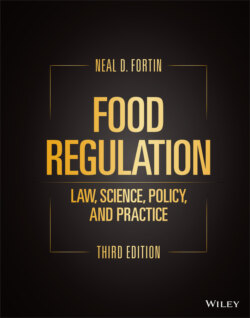Читать книгу Food Regulation - Neal D. Fortin - Страница 133
DISCUSSION QUESTIONS
Оглавление1 3.15 Puffery. In the context of false and misleading labels, what is the meaning of the word “puffery”? What is the difference between opinion, puffery, and misleading statements?
2 3.16 Misleading to whom? Whose viewpoint determines what is false and misleading? Is it a single consumer, most consumers, an average consumer, a diligently skeptical consumer, an average gullible consumer?
3 3.17 Frooty claims. At least two plaintiffs have alleged that they were duped into believing Froot Loops cereal contained real fruit. A “reasonable consumer” may be unwary or trusting, but these cases were dismissed as a matter of law because no reasonable consumer could be misled. “Froot” does not indicate real fruit ingredients. The cereal pieces are neon colored rings, which in no way resemble any fruit. Moreover, the front of the pack of cereal states the product is a “sweetened multi‐grain cereal.” See, McKinnis v. Kellogg USA, 2007 WL 4766060 (C.D. Cal. 2007); and Videtto v. Kellogg USA, 2009 WL 1439086 (E.D. Cal. 2009). Similar claims have been dismissed for “Cap’n Crunch’s Crunch Berries” cereal. See, Werbel v. Pepsico, Inc., 2010 WL 2673860 (N.D. Cal. 2010).
4 3.18 Actual injury. In the Alleged Apple Cider case, would it matter that no purchasers were misled or injured? Should this matter? See, U.S. v. 88 Cases … Bireley’s Orange Beverage, 187 F2d 967 (3d Cir. 1951) (FDA’s burden to prove is the label’s “capacity to deceive”).
